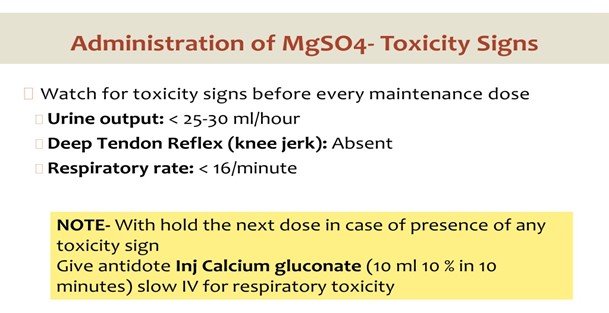A nurse is providing discharge instructions to a client who had pre-eclampsia and delivered a healthy baby.
Which statement by the client indicates a need for further teaching?
“I will monitor my blood pressure at home for the next few weeks.”
“I will report any headache, vision changes, or abdominal pain to my doctor.”
“I will resume my normal activities as soon as I get home.”
“I will continue to take my prenatal vitamins and iron supplements.”
The Correct Answer is C
The client should not resume normal activities as soon as she gets home because she is still at risk for complications from preeclampsia. She should rest as directed by her healthcare provider and avoid strenuous activities that may increase her blood pressure.
Choice A is wrong because monitoring blood pressure at home is a recommended practice for clients who had preeclampsia. It can help detect any signs of worsening hypertension or organ damage.
Choice B is wrong because reporting any headache, vision changes, or abdominal pain to the doctor is a crucial step to prevent serious complications from preeclampsia. These symptoms may indicate damage to the brain, eyes, or liver and require immediate medical attention.
Choice D is wrong because continuing to take prenatal vitamins and iron supplements is beneficial for the client’s recovery and health. Prenatal vitamins can provide essential nutrients that may be lacking in the diet, and iron supplements can prevent or treat anemia that may result from blood loss during delivery.
Nursing Test Bank
Naxlex Comprehensive Predictor Exams
Related Questions
Correct Answer is ["C","D"]
Explanation
The correct answer is choice C and D.Epigastric pain and decreased fetal movement are signs of severe pre-eclampsia that indicate damage to the liver and placenta respectively.These symptoms should be reported to the health care provider immediately as they may lead to serious complications such as eclampsia, HELLP syndrome, placental abruption or fetal growth restriction.
Choice A is wrong because sudden weight gain is a common symptom of mild pre-eclampsia that does not necessarily require immediate attention.However, it should be monitored regularly along with blood pressure and urine protein levels.
Choice B is wrong because swelling of the face and hands is also a common symptom of mild pre-eclampsia that does not indicate severe organ damage.It may be caused by fluid retention or edema.
Choice E is wrong because vaginal bleeding is not a typical symptom of pre-eclampsia.It may be a sign of other pregnancy complications such as placenta previa, placental abruption or cervical infection.
Correct Answer is C
Explanation
Deep tendon reflexes.
The nurse should monitor the client’s deep tendon reflexes to assess for signs of magnesium toxicity, which can cause respiratory depression, cardiac arrest, and coma.Magnesium sulfate is given to prevent seizures in clients with severe preeclampsia, but it can also have adverse effects on the neuromuscular system.

Choice A is wrong because blood pressure is not the most important assessment for a client receiving magnesium sulfate.
Blood pressure is a manifestation of preeclampsia, but it does not indicate magnesium toxicity.
Choice B is wrong because urine output is not the most important assessment for a client receiving magnesium sulfate.
Urine output should be at least 25 to 30 mL/hr to promote adequate excretion of magnesium, but it does not reflect the level of magnesium in the blood.
Choice D is wrong because fetal heart rate is not the most important assessment for a client receiving magnesium sulfate.
Fetal heart rate is important to monitor for signs of fetal distress, but it does not indicate maternal magnesium toxicity.
Whether you are a student looking to ace your exams or a practicing nurse seeking to enhance your expertise , our nursing education contents will empower you with the confidence and competence to make a difference in the lives of patients and become a respected leader in the healthcare field.
Visit Naxlex, invest in your future and unlock endless possibilities with our unparalleled nursing education contents today
Report Wrong Answer on the Current Question
Do you disagree with the answer? If yes, what is your expected answer? Explain.
Kindly be descriptive with the issue you are facing.
